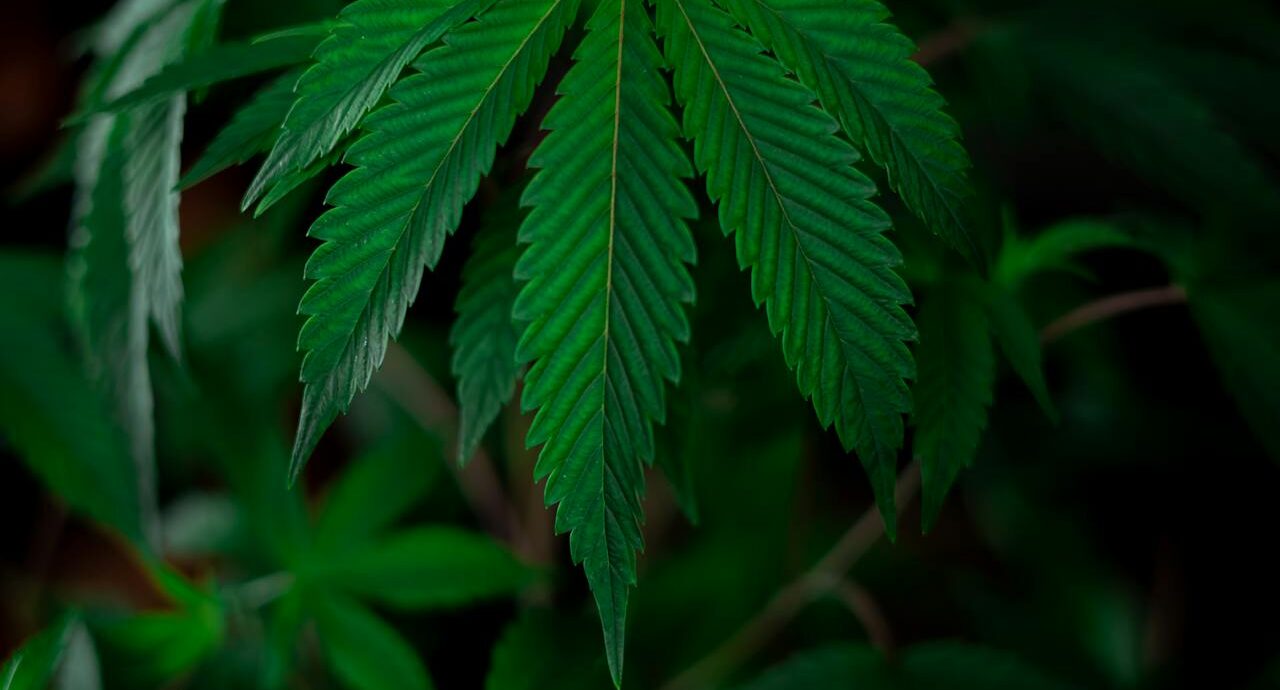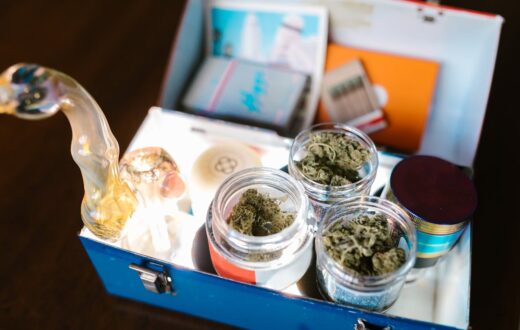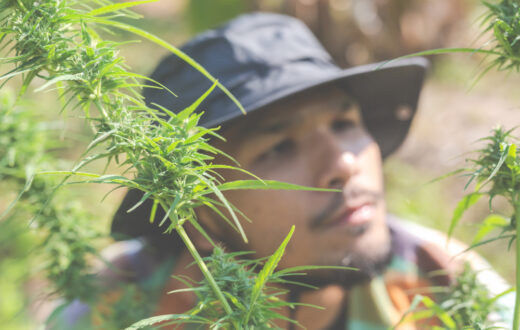Introduction to Zlushie: A Unique Cannabis Strain
The Zlushie weed strain has emerged as a distinctive variety within the rapidly evolving cannabis market. Originating from a carefully selected lineage, it combines genetic traits from renowned strains to offer a unique experience for consumers and cultivators alike. Its genetic makeup often includes a mix of obscure yet robust parent strains, contributing to an intriguing flavor profile and potent characteristics that attract growers and connoisseurs.
Characterized by its vibrant colors and dense buds, the Zlushie strain is not only visually stunning but also rich in flavor. Upon consumption, users often report a delightful blend of fruity and sweet notes, reminiscent of your favorite juicy candies. This appealing flavor profile makes it a favored choice among those who appreciate gourmet cannabis experiences. Additionally, Zlushie possesses a well-balanced cannabinoid profile, typically featuring a higher THC content, which can lead to a potent yet enjoyable high.
For growers, Zlushie presents an enticing opportunity. Her resistance to common pests and diseases makes it easier for growers to manage, while its relatively moderate flowering time appeals to both novice and experienced cultivators. The robust nature of the Zlushie weed strain allows it to thrive in various growing conditions, whether indoors or outdoors, making it versatile. The potential yield is another attractive factor, as growers can expect a generous harvest when the plant is appropriately nurtured.
Ultimately, Zlushie stands out not just for its flavor and effects but also for its cultivation potential, providing an enriching experience for those looking to expand their cannabis garden. As we delve deeper into the specifics of how to grow Zlushie weed strain effectively, understanding its unique characteristics becomes crucial for successful cultivation. Whether you aim to enjoy its effects personally or share them with others, cultivating Zlushie can be a rewarding endeavor.
Understanding Zlushie Genetics
The Zlushie weed strain is highly regarded in the cannabis community, primarily due to its intriguing genetic lineage. This hybrid strain stems from the crossbreeding of two prominent parent strains: Zkittlez and Kush Mints. Zkittlez is well-known for its exceptional flavor profile and euphoric effects, while Kush Mints contributes a frosty appeal along with strength and relaxation. The combination of these genetics results in a cultivar that boasts a robust flavor and impressive potency.
One of the distinguishing features of the Zlushie strain is its dominant terpenes, which include myrcene, limonene, and caryophyllene. Myrcene is responsible for providing the strain with relaxing and sedative effects, while limonene imparts a citrusy aroma linked to uplifting feelings. Caryophyllene, on the other hand, offers a peppery scent and is noted for its anti-inflammatory properties. Together, these terpenes create a complex aromatic profile and contribute to the overall experience of consuming Zlushie weed.
Genetics play a crucial role in determining the growth patterns and yield potential of the Zlushie strain. The hybrid nature of Zlushie leads to balanced characteristics from both Indica and Sativa origins, allowing cultivators to expect a variety of growth behaviors. Typically, Zlushie plants exhibit lush growth with dense foliage, potentially resulting in higher yield compared to some other strains. Additionally, understanding its genetic makeup aids growers in meeting specific environmental conditions, which ultimately influences flavor and effects in the final product. By familiarizing themselves with Zlushie genetics, cultivators can effectively prepare to grow this unique strain, optimizing for the best quality buds.
Ideal Growing Conditions for Zlushie
Creating the optimal environment is crucial to successfully cultivate the Zlushie weed strain. Various factors, including temperature, humidity, soil type, and lighting, play significant roles in the plant’s development and yield. Understanding how to grow Zlushie weed strain effectively begins with these core environmental parameters.
The ideal temperature range for Zlushie plants is between 70°F to 85°F (20°C to 30°C) during the day and slightly cooler at night. Maintaining warmth encourages robust growth without subjecting the plants to heat stress, which can negatively impact their health. Growers should also monitor their temperature closely, particularly in indoor setups where changes can occur rapidly. A thermometer can be an indispensable tool for accurate tracking.
Humidity levels should be maintained at about 40% to 60% during the vegetative stage, reducing to around 40% during flowering. High humidity can promote mold and mildew, which are detrimental to the Zlushie strain’s overall success. Proper ventilation and air circulation are essential to achieving these humidity levels, as stagnant air can contribute to undesirable moisture accumulation.
Soil composition is another critical parameter for growing Zlushie. A well-draining, nutrient-rich soil mix fosters plant growth and ensures that the roots receive necessary nutrients. Many growers opt for a combination of organic compost, perlite, and vermiculite to create an optimal growing medium. Additionally, the pH level of the soil should be maintained between 6.0 and 7.0 to facilitate nutrient absorption effectively.
Lastly, Zlushie plants thrive under bright, consistent light. Indoor growers should utilize high-quality LED lights or HID systems to mimic natural sunlight. A light cycle of approximately 18 hours of light during the vegetative stage and 12 hours during flowering helps to stimulate robust growth and maximize yields. By paying attention to these environmental conditions, cultivators can ensure a thriving health and abundance when learning how to grow Zlushie weed strain.
Growing Zlushie Indoors vs. Outdoors
When considering how to grow Zlushie weed strain, one of the first decisions growers face is whether to cultivate it indoors or outdoors. Each method comes with its own set of benefits and challenges, significantly impacting the overall growth experience and yield.
Growing Zlushie indoors allows for greater control over environmental conditions. Indoor growers can precisely manage factors such as temperature, humidity, and light exposure, which is crucial for optimizing plant health and development. This controlled setting can lead to quicker growth cycles and more consistent results. Furthermore, indoor cultivation reduces the risk of pests and diseases that can often plague outdoor crops. However, it does require a significant initial investment in equipment such as grow lights, ventilation systems, and climate control technology.
On the other hand, outdoor cultivation of Zlushie provides the plants with a more natural growing environment. Depending on the region, outdoor grows can benefit from ample sunlight and fresh air, which can translate to larger yields. The use of natural sunlight can significantly reduce costs compared to indoor setups. However, outdoor cultivation is subject to the whims of nature, including fluctuating weather conditions, pests, and potential contamination from nearby plants. Additionally, growers have less control over the plants’ growth cycle, leading to possible inconsistencies in the final product.
Ultimately, the choice between indoor and outdoor growing depends on various factors, including available space, the grower’s budget, and individual preferences regarding control and yield. Understanding how to grow Zlushie weed strain effectively requires careful consideration of these aspects to make the best possible decision based on the grower’s specific circumstances and goals.
Nutrient Requirements for Zlushie Plants
Understanding the nutrient requirements for Zlushie weed strain is critical to ensure optimal growth and yield throughout its various stages. During the vegetative stage, Zlushie plants require a balanced mix of nitrogen (N), phosphorus (P), and potassium (K), commonly referred to as NPK. A suitable NPK ratio for this phase is 3-1-2. Nitrogen promotes lush foliage development, which is essential for photosynthesis, while phosphorus supports root growth and cannabis formation. Potassium plays a vital role in overall plant health and resistance to diseases.
As Zlushie plants transition to the flowering stage, their nutrient needs shift. A NPK ratio of 1-3-2 is typically recommended during this time. Increased phosphorus is critical for developing robust buds, while potassium aids in the maturation process and enhances flavor. Careful monitoring of your plants’ health will help adjust nutrient levels appropriately, ensuring they receive everything they need for optimal performance.
Additives such as calcium, magnesium, and sulfur can also play pivotal roles in supporting the overall health of Zlushie plants. Calcium promotes strong cell structure, magnesium aids in chlorophyll production, and sulfur enhances oil production, contributing to the strain’s aromatic profile. It is advisable to incorporate these micronutrients through soil amendments or liquid fertilizers.
In terms of feeding schedules, newly planted Zlushie seedlings should receive nutrients sparingly, gradually increasing as they mature. A bi-weekly feeding schedule works well, allowing for adequate nutrient availability without causing nutrient burn. Keeping a close watch on the plants’ reactions to the nutrients provided will help determine if adjustments are necessary. Collectively, these practices will significantly enhance the growth potential and yield of Zlushie weed strain, ensuring a successful cultivation experience.
Common Pests and Diseases Affecting Zlushie
Growing the Zlushie weed strain can be a rewarding experience; however, like any cannabis variety, it is susceptible to certain pests and diseases that may harm its growth and yield. Identifying these threats early on is crucial for maintaining plant health and maximizing the strain’s unique qualities. One of the most common pests that can affect Zlushie plants is the spider mite. This tiny arachnid may go unnoticed at first but can quickly cause severe damage by sucking the life from the plant. Signs of infestation include webbing on leaves and tiny yellow or brown spots, which indicate that the plant is struggling.
Another notable pest is the aphid, which may appear in clusters, often on the undersides of leaves. These pests feed on plant sap, weakening the Zlushie plants and potentially leading to stunted growth. To prevent such infestations, maintaining a clean and well-ventilated growing environment is essential. Introducing beneficial insects, such as ladybugs or predatory wasps, can also be an effective strategy to keep pest populations in check.
Additionally, Zlushie plants are at risk for various diseases like powdery mildew and root rot. Powdery mildew often presents itself as white, powdery spots on leaves and thrives in humid environments. Ensuring proper air circulation, controlling humidity levels, and applying organic fungicides can help prevent this disease. Root rot, on the other hand, is typically caused by overwatering or poor drainage. To mitigate this risk, growers should ensure that pots have adequate drainage and monitor watering habits carefully.
By keeping an eye on these common pests and diseases that affect the Zlushie weed strain and implementing preventive measures, growers can thrive in producing healthy, high-yield plants throughout their growing cycle.
Harvesting Zlushie: When and How to Do It
Harvesting the Zlushie weed strain is a critical stage in the cultivation process, as it directly influences the quality and potency of the final product. It is essential for growers to closely monitor the plants to determine the optimal time for harvesting. Generally, Zlushie is ready for harvest when the trichomes—tiny, resinous glands on the buds—transition from clear to a milky or cloudy appearance. This change typically signifies that the plants have reached their peak potency. Additionally, some growers may prefer to wait until a portion of the trichomes turn amber, which can impart a more sedative effect to the final buds.
Another visual cue to consider is the color of the pistils; they should have darkened and curled inwards, indicating the plant has matured. It is advisable to inspect multiple buds across different plants to ensure uniformity in readiness for harvest. Once growers establish that the Zlushie is at its ideal maturity, they should prepare for the harvesting process with careful techniques.
To begin harvesting, it is recommended to use clean, sharp scissors or pruning shears to cut the branches or individual buds, avoiding excess damage to the plant. Growers may choose to hang the branches upside down in a dark, cool, and well-ventilated space for drying. This technique aids in preserving the potency and flavor of the Zlushie strain. After the drying phase, trimming the foliage around the buds will help enhance both appearance and quality. Following the trimming process, curing the buds in airtight containers will further refine the aroma and taste, leading to a superior smoke experience.
By following these steps, growers can effectively harvest Zlushie and subsequently enhance the quality of their yield. This meticulous approach will ensure that the Zlushie weed strain maintains its desired characteristics, delivering a product that meets growers’ expectations.
Curing Zlushie for Maximum Flavor and Potency
Curing is a crucial process in the cultivation of Zlushie weed strain, and it plays a significant role in enhancing both the aroma and potency of the final product. After harvesting, the buds must be dried and cured correctly to prevent mold growth and preserve essential cannabinoids and terpenes. This ensures that the Zlushie strain retains its distinctive flavors and provides the expected effects.
The initial step in the curing process begins with drying the harvested buds. It is advisable to hang the flowers upside down in a dark, well-ventilated space with controlled temperature and humidity levels. An optimal temperature range for drying is between 60°F to 70°F (15°C to 21°C), while the humidity level should be maintained at around 50% to 60%. This balance allows excess moisture to evaporate without compromising the quality of the Zlushie strain.
Once the buds are sufficiently dried—typically taking about 7 to 14 days—they should be placed in airtight containers for the curing phase. During this time, it is essential to monitor the humidity inside the jars, ideally aiming for a level of around 60% to 65%. Opening the jars for a few minutes daily to release excess moisture will help prevent mold, allowing the buds to breathe.
The curing process can take from two weeks to several months, and while it requires patience, the results are often well worth the wait. Properly cured Zlushie weed strain will exhibit a richer flavor profile and enhanced potency. This meticulous approach to curing not only elevates the smoking experience but also preserves the plant’s natural characteristics, ensuring that the essence of Zlushie is fully realized. Ultimately, understanding how to grow Zlushie weed strain effectively extends beyond cultivation and delves into proper post-harvest care, where curing becomes integral to achieving premium quality.
Conclusion: The Rewards of Growing Zlushie Strain
Growing the Zlushie weed strain offers numerous rewards for both novice and experienced cultivators. As a hybrid strain, Zlushie combines the uplifting effects of Sativa with the calming properties of Indica, making it a popular choice among cannabis enthusiasts. The unique flavor profile, characterized by fruity and sweet notes, adds to its appeal, making the effort put into cultivating this strain worthwhile.
To successfully grow the Zlushie strain, it is essential to understand its specific needs and preferences. From managing light exposure to optimizing soil conditions, attention to detail can significantly enhance the growth process. Implementing techniques such as proper pruning and nutrient management will lead to healthier plants and ultimately result in a more bountiful harvest. Many growers find that by following the recommended guidelines, they can achieve robust yields that showcase the enticing characteristics of Zlushie.
In addition to the cultivation process, the overall experience of growing Zlushie facilitates a deeper bond with the plant and an appreciation for the nuances of cannabis cultivation. The knowledge gained during the growing season translates to better practices for future grows, leading to a more proficient approach over time. Furthermore, enjoying the fruits of one’s labor through personal use or sharing with friends adds an extra layer of fulfillment to the experience.
In conclusion, by applying the tips and techniques discussed throughout this blog post, growers can successfully cultivate the Zlushie weed strain. The rewards of growing this strain extend beyond its unique characteristics and effects, marking the cultivation journey as a valuable and enriching endeavor.












